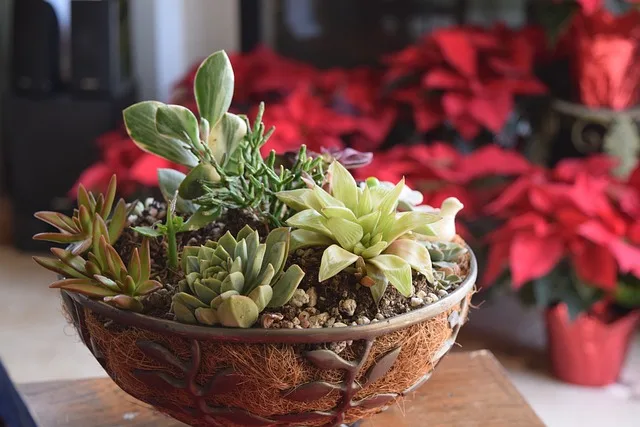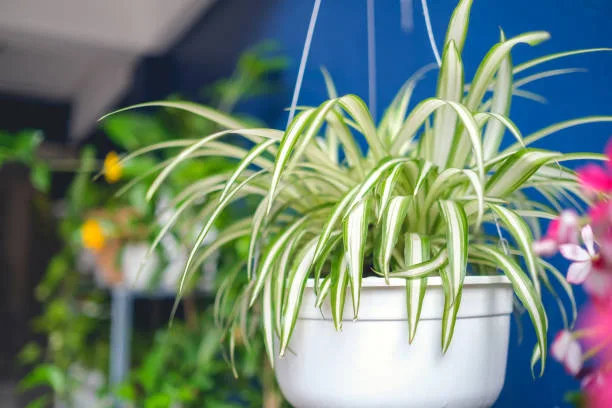
In today’s increasingly polluted world, the importance of clean indoor air cannot be understated. As we spend most of our time indoors, it’s crucial to create a safe haven that promotes good health. Luckily, Mother Nature has provided us with a natural solution – indoor plants! Not only do they add aesthetic appeal to our living spaces, but certain plants also possess the unique ability to combat air pollution and promote lung health. In this blog article, we will explore the benefits of incorporating these remarkable plants into our homes.
Philodendron: The Air-Purifying Champion

Known for their beautiful, heart-shaped leaves, Philodendrons are nature’s own air purifiers. These plants actively filter harmful toxins like formaldehyde and benzene from the air, improving overall air quality. By reducing air pollution levels, Philodendrons help minimize the risk of respiratory problems and allergies, promoting better lung health for all inhabitants of the space.
Snake Plant: Oxygen-Rich Oasis

If you’re searching for a low-maintenance plant that packs a powerful punch, look no further than the Snake Plant. Renowned for its ability to convert carbon dioxide into oxygen during the day and night, this incredible plant acts as a natural air freshener. Its oxygen-boosting properties not only make your space feel fresher but also contribute to better respiratory health, improving focus and overall productivity.
Aloe Vera: The Multi-Purpose Lung Support

Aloe Vera has long been cherished for its medicinal qualities, but did you know it also helps in combating indoor air pollution? This incredible plant not only removes toxins like formaldehyde and benzene but also releases a high amount of oxygen during the night, making it an excellent bedroom plant. Furthermore, Aloe Vera’s succulent leaves can be juiced to create a cooling drink that can potentially soothe and support lung function.
Peace Lily: Gorgeous Guardian of Clean Air

The Peace Lily is not just a pretty face; it is also a potent air purifier. Studies have shown that this elegant plant effectively removes toxins like ammonia, benzene, and formaldehyde from indoor environments. Its glossy leaves and graceful white flowers are sure to add a touch of tranquility to any space, while simultaneously promoting respiratory health for the entire household.
Spider Plant: Nature’s Detoxifier

Don’t let the name scare you away – the Spider Plant is a true indoor superhero! This resilient and low-maintenance plant is masterful at removing pollutants like carbon monoxide and xylene from the air. Its long flowing leaves and tiny offshoots also make it a visual delight, perfect for sprucing up any room. With improved air quality, you can breathe deep and experience greater lung health without compromising on style.
Conclusion:
In our fast-paced, modern lives, maintaining good health is of utmost importance. Through the use of indoor plants, we can combat the effects of air pollution and enjoy improved respiratory well-being. From the air-purifying abilities of Philodendrons and Peace Lilies to the oxygen-rich environments provided by Snake Plants and Aloe Vera, these natural allies perform miracles for our lung health. So, go ahead and bring these green superheroes into your home, and experience the transformative benefits of cleaner air and healthier
FAQ’s:
1. How do indoor plants contribute to better air quality and lung health?
- Indoor plants act as natural air purifiers by filtering out harmful toxins, such as formaldehyde and benzene, from the air. They also release oxygen, creating a cleaner and more oxygen-rich environment that promotes respiratory well-being.
2. Which plant is considered an air-purifying champion?
- Philodendrons are known for their air-purifying abilities. They actively filter toxins from the air, helping to reduce air pollution levels and minimize the risk of respiratory problems and allergies.
3. What makes the Snake Plant unique in promoting lung health?
- The Snake Plant is exceptional at converting carbon dioxide into oxygen both during the day and night. Its oxygen-boosting properties make it a natural air freshener, contributing to improved respiratory health, focus, and overall productivity.
4. How does Aloe Vera support lung health and combat indoor air pollution?
- Aloe Vera not only removes toxins like formaldehyde and benzene but also releases a high amount of oxygen during the night. Additionally, the succulent leaves of Aloe Vera can be juiced to create a cooling drink that may soothe and support lung function.
5. Which toxins does the Peace Lily effectively remove from indoor environments?
- The Peace Lily is known for effectively removing toxins such as ammonia, benzene, and formaldehyde from indoor spaces. Its elegant appearance, with glossy leaves and white flowers, adds tranquility to any space while promoting respiratory health.
6. How does the Spider Plant act as nature’s detoxifier?
- The Spider Plant excels at removing pollutants like carbon monoxide and xylene from the air. Its resilient and low-maintenance nature, along with visually pleasing long flowing leaves and tiny offshoots, makes it an ideal choice for enhancing air quality without compromising style.
7. Can indoor plants be placed in bedrooms, and if so, which ones are suitable?
- Yes, certain plants like Aloe Vera, known for releasing oxygen during the night, make excellent choices for bedrooms. The Peace Lily, with its air-purifying properties, can also be placed in bedrooms to promote clean and healthy air.
8. Are these indoor plants suitable for individuals with respiratory conditions?
- While these plants contribute to cleaner air and improved respiratory health, individuals with specific respiratory conditions should consult with a healthcare professional for personalized advice. The plants mentioned generally have positive effects on air quality and lung health.
9. How can one maintain these indoor plants for optimal performance?
- General care tips include providing adequate sunlight, proper watering, and periodic cleaning of leaves. Each plant may have specific care requirements, so referring to care guides for individual plants is recommended.
10. Can these indoor plants be kept in offices or workplaces?
- Yes, these indoor plants can be suitable for offices or workplaces. Their air-purifying and oxygen-boosting properties can contribute to creating a healthier and more productive indoor environment. Consider factors such as light conditions and maintenance requirements when placing them in workspaces.

